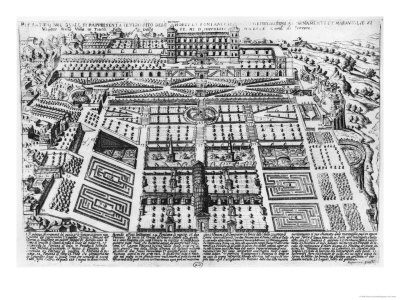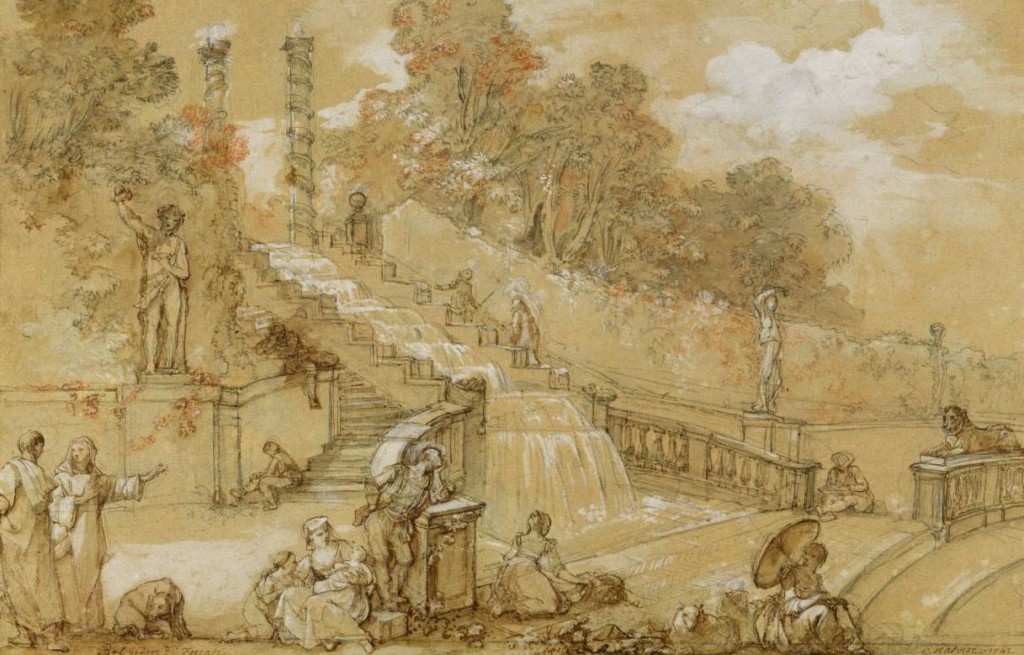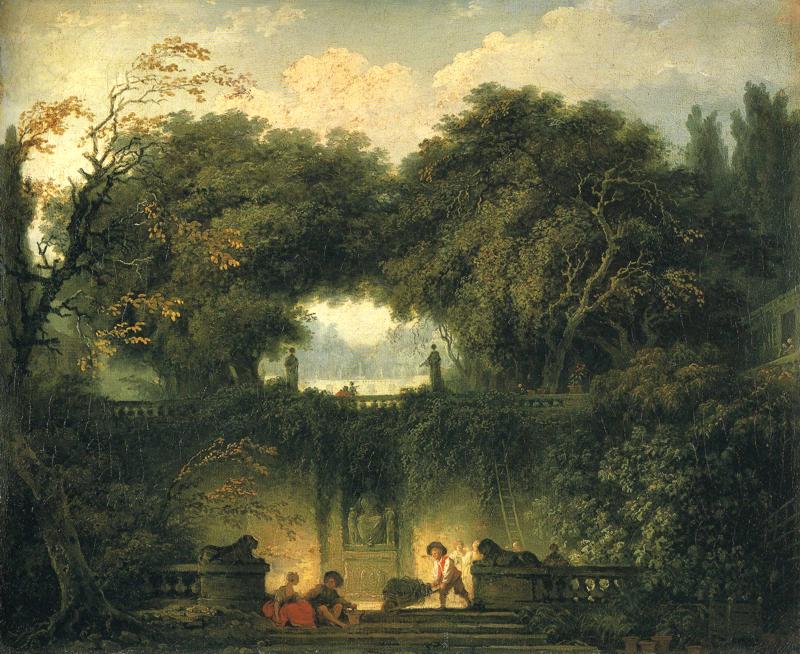Water and architecture. A highly arbitrary and artificial art that makes for an unparalleled instrument of grandeur and romance. The use of water with architecture has a long history and a universally seductive appeal. “Water-works” as the artful disposition of still and moving water has been called at least since the Renaissance, have been less concerned with plumbing than with pleasure. Their primary purpose has been to provide delight, drama and conspicuous display: three non-essentials that nourish the spirit of the individual even though we can do without the flourish of fountains and falls.

the famous gardens of the Villa d’Este, sixteen miles east of Rome, where the capacities of the medium for ornamental effects is pushed as far as it could go. From some five hundred fountains it gushes and is rarely allowed to pause. The gardens were begun in the mid sixteenth century by the Cardinal Ippolito II d’Este, who having failed five times to become elected pope, decided nevertheless to live in pontifical splendor. This engraving, dated 1573, may have been the original design, though some of its elements were not carried out and others were changed. Image:http://www.art.com/products/p12061358-sa-i1505076/the-villa-deste-palace-and-gardens-tivoli-italy-circa-1600.htm
On occasion, water even becomes a kind of architecture, in a fascinating and calculated confusion of effects. The famous water gardens of the Villa d’Este at Tivoli so mix arches, walls, niches, gates and porticoes with sprays and falls that a decorative, freestanding, aquatic architecture is created, of which water is an inseparable part. Cascades at the Villa Aldobrandini at Frascati, winding down columns and becoming broad sheets of carefully defined and maintained shape, approached, quite consciously, an almost architectural solidity. To add to the deliberate deception, trees and hedges were trimmed geometrically to make flat, high, green, outdoor walls that would have delighted that modern master of beautiful walls-for-thir-own-sake, Mies van der Rohe.

—VILLA ALDOBRANDINI AT FRASCATI
CASPER ANDRIAANS VAN WITTEL
PRIVATE COLLECTION—http://www.baroque.us/painting/wittel/frascati.html
The Renaissance was, despite artificially created moats, central channels, the grandiosity of lagoons, man-made islands, rocky grottoes, reptile stocked pools and other mixtures of sensuous and sentiment, medieval romanticism and the new sense of rationalism, merely a curtain raiser for the baroque. The seventeenth century was the Age of Water, and the fantasies of the Italian seicento make all other aquatic achievements pale beside them. The exuberance, the orgiastic display, the emotional extravagance, the impassioned overstatement of the baroque taste, turned naturally to a medium that offered maximum excitement, drama, and change.

—In the mid to later years of the rococo, one artist, Charles Joseph Natoire found himself director of the French Academy in Rome. Fond of landscapes and the importance of practising them, he encouraged his own students to do the same. The Cascade at the Villa Aldobrandini, Frascati is a beautiful example of a pen and ink landscape, shaded with brown washes. It is absolutely lovely.—Read More:http://marie-antoinettequeenoffrance.blogspot.ca/2009_11_22_archive.html
Paradoxically, we admire most what we would not, today, dare to create. The fantastic water gardens of the sixteenth and seventeenth centuries of the Villa d’Este at Tivoli, the Boboli Gardens in Florence, the Villas Aldobrandini at Frascati and Torlonia at Poero, the fountains of the Villa Lante at bagnaia- all stressed exaggerated flights of fancy, united the beautiful and the grotesque with suave assurance, piled drama on drama, and capped climax with climax to produce effects that remain among the most marvelous artistic achievements of any age.
The ideals of the baroque were dynamic movement and superhuman grandeur . Against a background of building elements progessively related to the great houses- porticoes, walls, arcades, columns, gates, stairs, and platforms on a series of stepped levels- an infinite variety of water forms, including jets, streams, sprays pools, fountains, and cascades, were integrated with that rare, stylish synthesis which characterized the baroque talent and has escaped every period since.
But it is the elaborate and imaginative use of sculpture that makes these waterworks unique. No purist theories, no shackles of “good taste,” held the baroque artist back. At the Villa d’Este alone, a conservative inventory of sculptural elements, used independently or in architectural compositions, but used always with water, yields a formidable assortment of gods and goddesses with mythological entourages; boats, obelisks, eagles, dolphins, horses, wolves; fanciful rock groups; maidens standing, sitting and reclining; small boys relieving themselves from high pedestals; masks, putti, and shells. The famous water organ, which played a tune as water pressure forced air through pipes, was a popular conceit of the time. Even more popular were the “water jokes,” a source of hilarious amusement to their aristocratic perpetrators, causing unwary visitors to be doused by pipes concealed in benches, steps, and trees, or wherever they would cause the most delicious embarrassment. The Villa’s water needs, of course, could have been supplied
ar simpler fashion, but the water garden ran the gamut from fun house to gallery of art.






 COMMENTS
COMMENTS